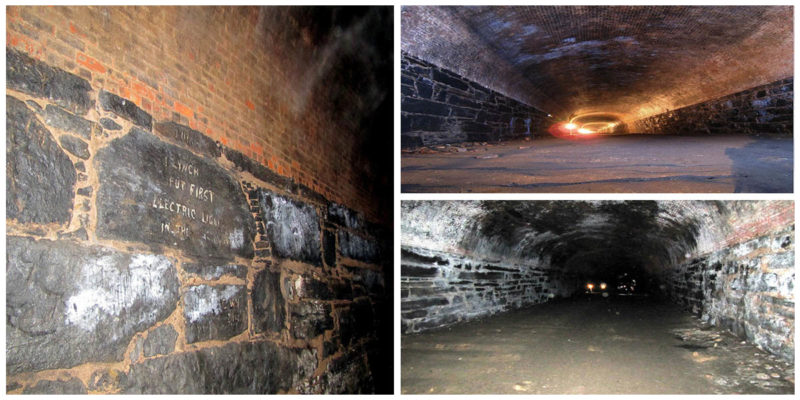Cobble Hill Tunnel, commonly known as Atlantic Avenue Tunnel, in the City of Brooklyn belongs to the Long Island Rail Road (LIRR). Its original construction began using an open cutting technique in May 1844. Even though it was officially opened just seven months later on December 3 that same year, it was not completely finished until the end of the spring in 1845.
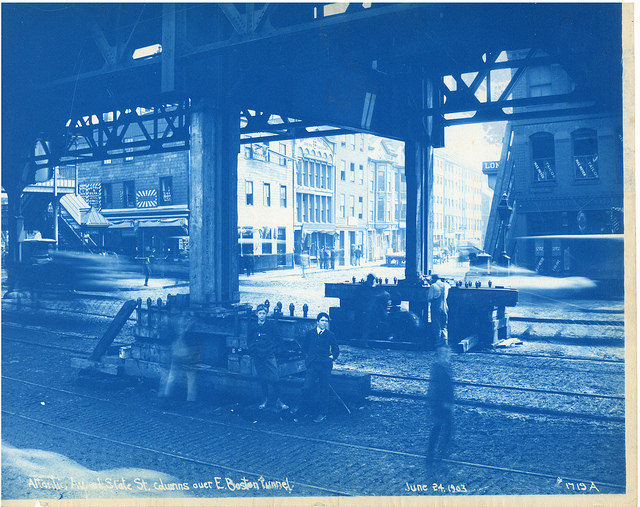
The purpose for its initial existence was mostly to satisfy public demand for a grade-separated right of way for the Brooklyn and Jamaica Railroad (later renamed Long Island Rail Road) toward the South Ferry at the foot of Atlantic Street. This would allow for passengers to be able to catch the ferries to Manhattan.
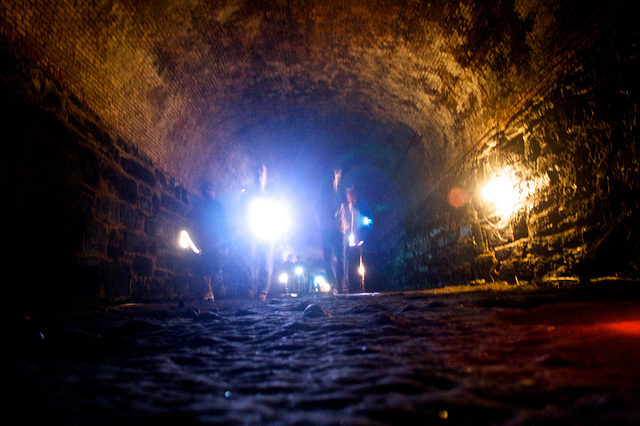
Before the Cobble Hill cutting was constructed, train cars were hauled up the steep gradient by teams of horses starting from Clinton Street all the way down Atlantic Street ending at Parmentier’s Garden.
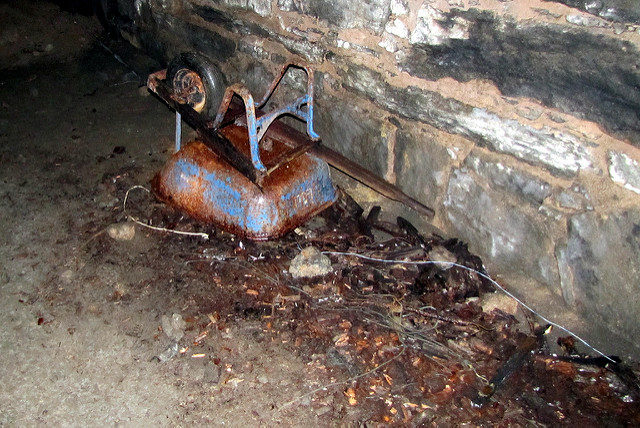
Just five years after the cutting was finished everything was roofed over transforming this open cutting into a tunnel, and Atlantic Avenue was built over it.
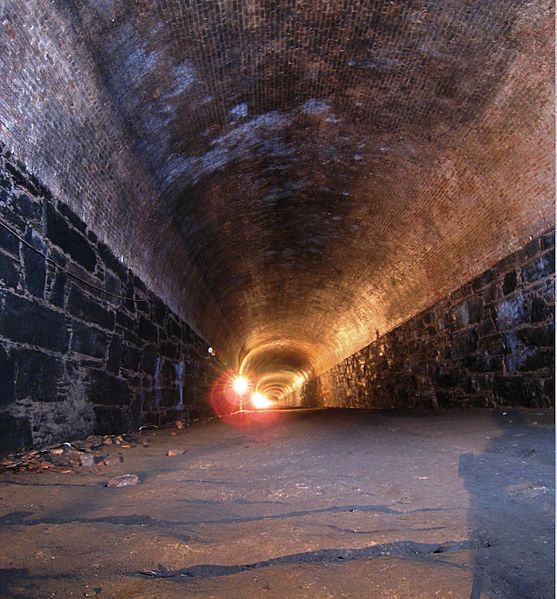
In 1848 the New York and New Haven Railroad Line was completed through Connecticut. This provided a faster direct connection from New York City to Boston. For years the Cobble Hill Tunnel and the Long Island Railroad served as a primary means of access to most of central Long Island from Manhattan and New York City.
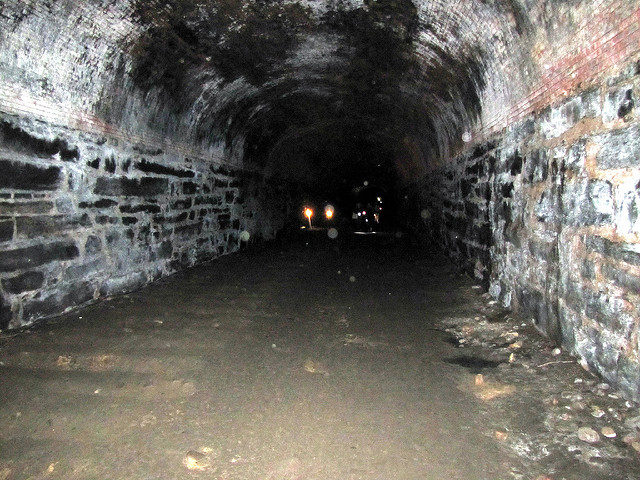
The original dimensions of the tunnel are 21 feet wide and 2,517 feet long. Once the tunnel was roofed the height of the tunnel reached 17 feet.
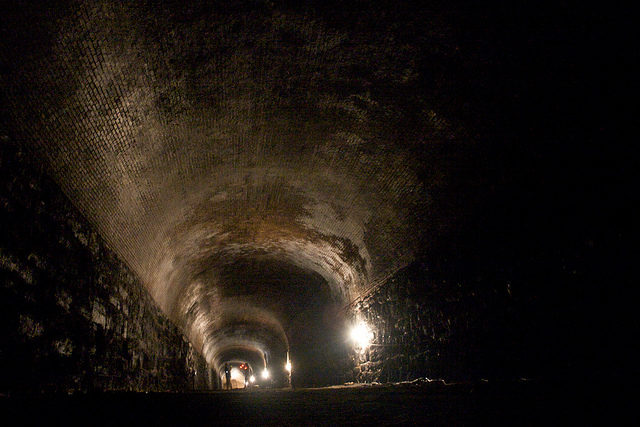
The New York State Legislature controversially voted to ban railroad locomotives from within the limits of the City of Brooklyn, so the tunnel was closed for service and ends of the tunnel were sealed in 1861.
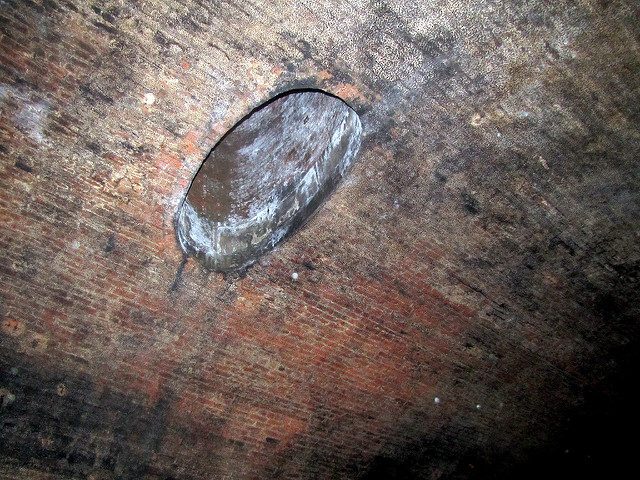
A huge tax assessment was ordered by all property owners along Atlantic Street in order to fund compensation payments to the railroad. It was not at that time public knowledge that New York State Governor John A. King was a major shareholder in the Brooklyn and Jamaica Railroad and stood to benefit from this.
Walt Whitman (an American poet, essayist, and journalist) at one point wrote: …its glory, after enduring in great splendour for a season, has now vanished—at least its Long Island Railroad glory has. The tunnel: dark as the grave, cold, damp, and silent…
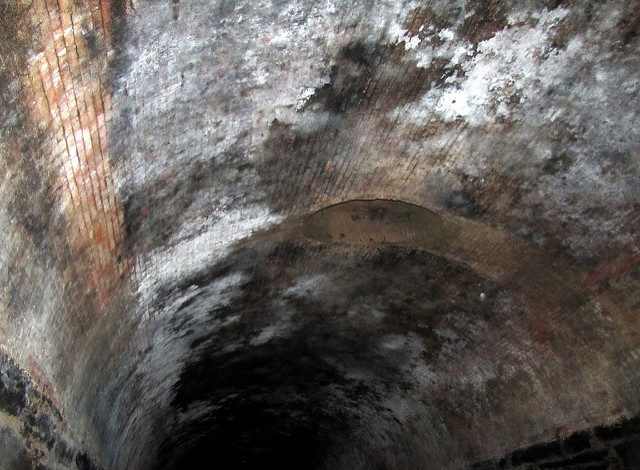
Years later in 1916, the Bureau of Investigation suspected German terrorists were making bombs in the tunnel. They broke through the roof of the tunnel using jackhammers. Fortunately, they found nothing but decided to install an electric light before resealing the tunnel.
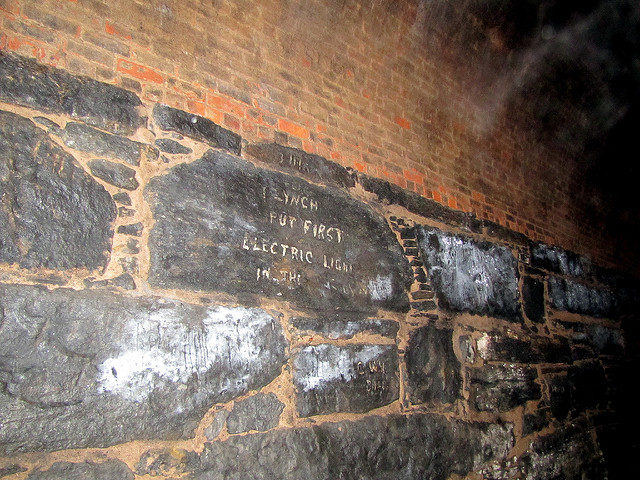
Slowly the tunnel became the object of many urban myths. There were a large number of rumours that the tunnel was opened and resealed over and over again through the years in search for spies, bombs, dead bodies, and bootleggers. No evidence proves that the tunnel was ever entered after the FBI initially resealed it.
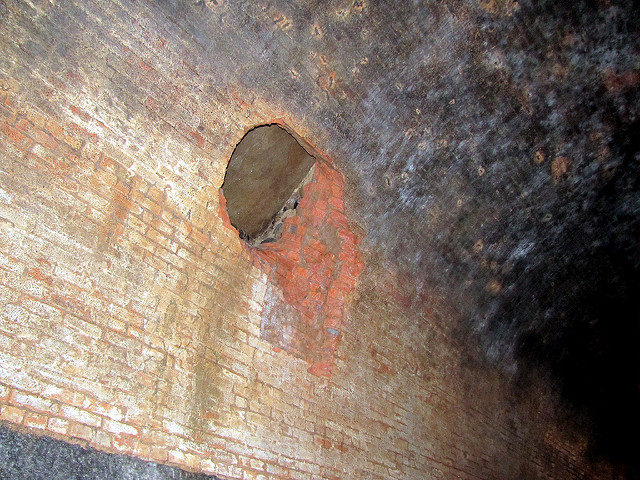
The tunnel was completely forgotten for years until a young fellow, 20-year-old Robert Diamond, made a diamond discovery. He used the manhole at Atlantic Avenue and Court Street to get underground, then crawled some 70 feet until he found a bulkhead wall that sealed off the main portion of the tunnel.
With the assistance of an engineering team of Brooklyn Union Gas Company, he managed to break through the concrete seal. And so the tunnel was rediscovered after years of being forgotten. The tunnel was accessible up until 2010 when the Department of Transportation terminated Robert’s contract to run tours inside the tunnel, citing safety concerns.
The Atlantic Avenue tunnel was even featured in the History Channel series Cities of the Underworld and the TV show Treasure Hunters.
